There’s a fine line between adventure and too much adventure that becomes less distinct with experience and time. And, as it turns out, I’m a slow learner… So, it’s no surprise that I was once again eager to feel the sting of the sharper edge of adventure. I knew just the place.
We traced our fine line down a remote, jungle river in Mexico—descended only once before, in the early 1990s at low water. The first descent team was only able to traverse the second of two caves the river plummets through, and only after extensive reconnaissance. They never found a way through the first cave.
Our goal was to connect the missing piece: complete as much of the seven miles of Class V above the caves, descend through both caves, and paddle another few miles to civilization. Although the trip was only 15 total river miles, we budgeted eight days—a conservative estimate given both the difficulty of the whitewater and the unexplored cave.
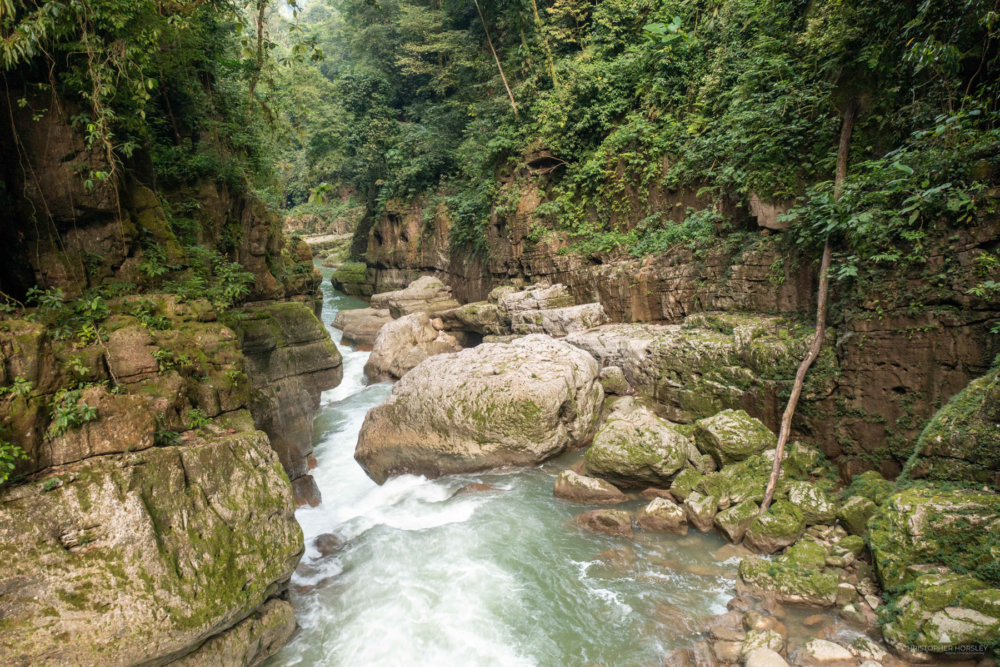
At the put-in, our two kayaks and ducky were comically heavy. In addition to a week’s worth of food and self-support gear, we had 550’ of static climbing rope, harnesses, a full trad rack, ascending gear, and a dry bag stuffed to the gills with a bolt gun, pitons and bolts in case things got too spicy in the caves. We also had camera gear and a drone to help scout, plus a single machete from Walmart that my mom spent hours meticulously sharpening back in Denver.
As we pushed off, we soon learned the paddle-to-portage-to-progress ratio would be rather skewed on this trip. To be fair, it was Chris’s first time paddling a ducky, and I was pretty sure I had broken my ribs courtesy of a silly slip in a nearby cave three days prior. Those three days and the allure of a pristine jungle river provided just enough time to convince myself my ribs were merely bruised (see: slow learner). But after shouldering a 100+ pound kayak over rocks so slippery even ice skates wouldn’t provide traction, then seal launching and running a mandatory 15-foot waterfall early on day one… Yeah. They were definitely broken.
That afternoon, we danced on the right side of the fine line of adventure. Our team fell into rhythm, bouncing through beautiful jungle gorges. My younger brother, Sam, led the waltz downstream, with jungle-filtered sunlight reflecting our smiles and paddle strokes.
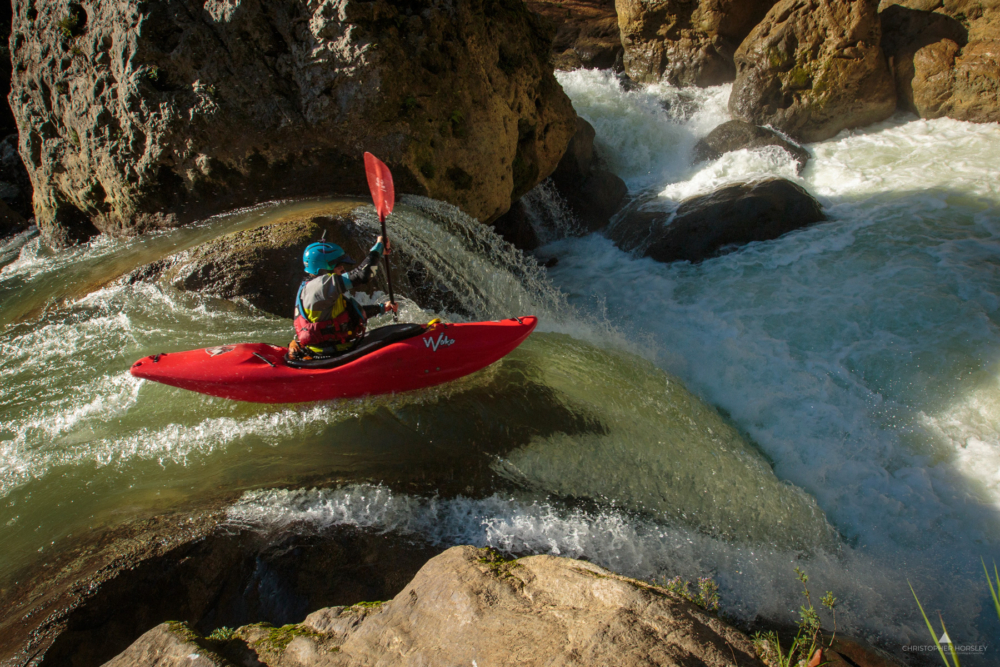
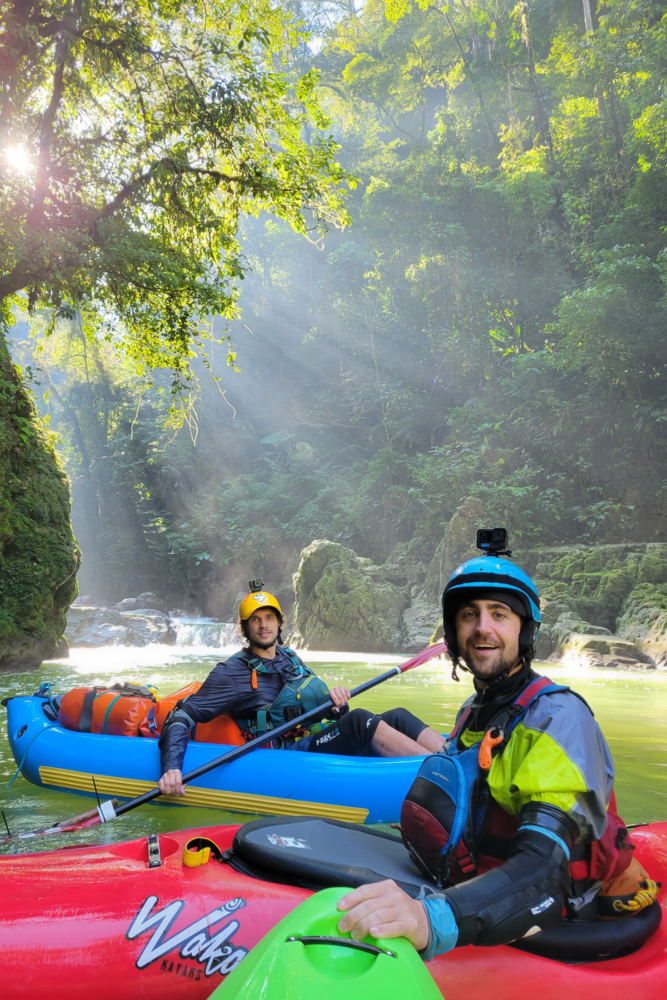
Between rapids, we struggled to coordinate complex portages as the limestone grew even more slippery. Most required using ropes to traverse canyon walls and sieves. After back-to-back twenty-footers below a spectacular waterfall, we made camp, having covered just 1.7 miles.
Our goal for day two was to reach a major confluence four miles downstream. But with bigger rapids, extensive scouts and more complex portages, we arrived at the confluence at the end of day three. Rather than frustrated, we were elated. Despite the river being more difficult than expected, we were functioning as an incredibly strong team and handled these challenges exceedingly well.
At the confluence, the river doubled, the sieves tripled, and we had to to run more questionable rapids. Chris spent the night battling ‘Montezuma’s revenge’ and didn’t sleep much. My broken ribs kept me and Sam (my unlucky tent-mate) tossing and turning.
We forgot our only pump somewhere in the jungle after another portage, watched a dropped paddle float through a sieve (later to be recovered), and broke another paddle in half on a throw-and-go. It took us almost the entire day to cover just one mile. At some point, we unknowingly committed to a slot canyon above the first cave, making any upstream egress impossible.
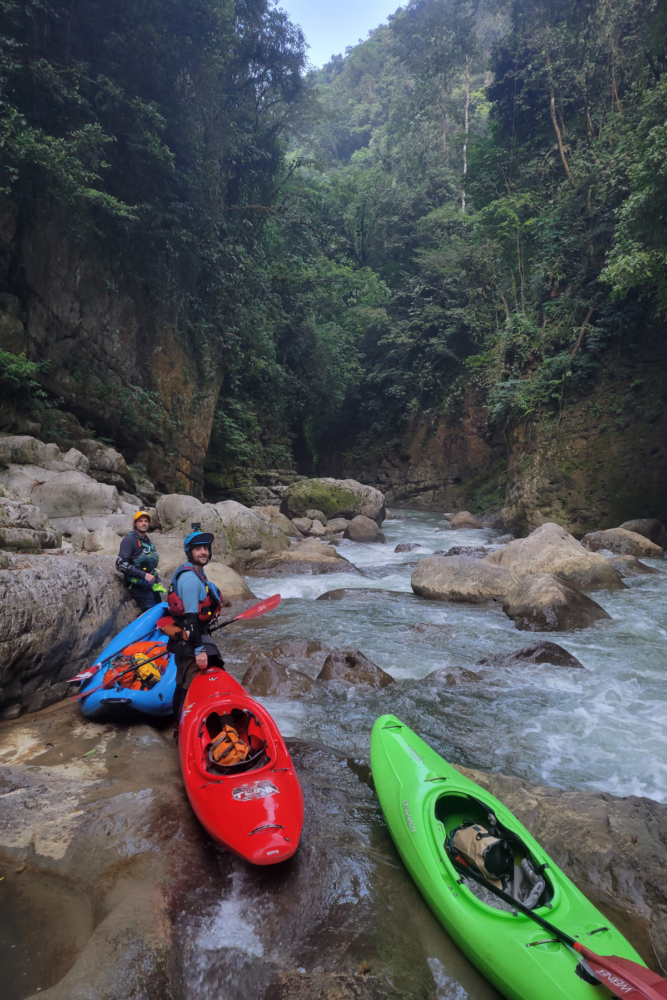
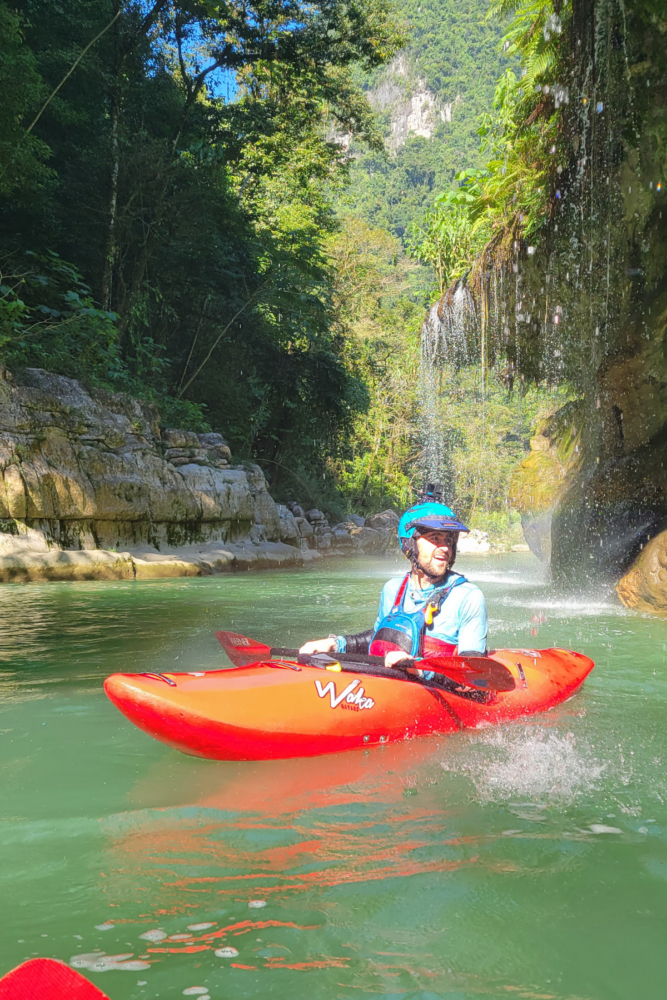
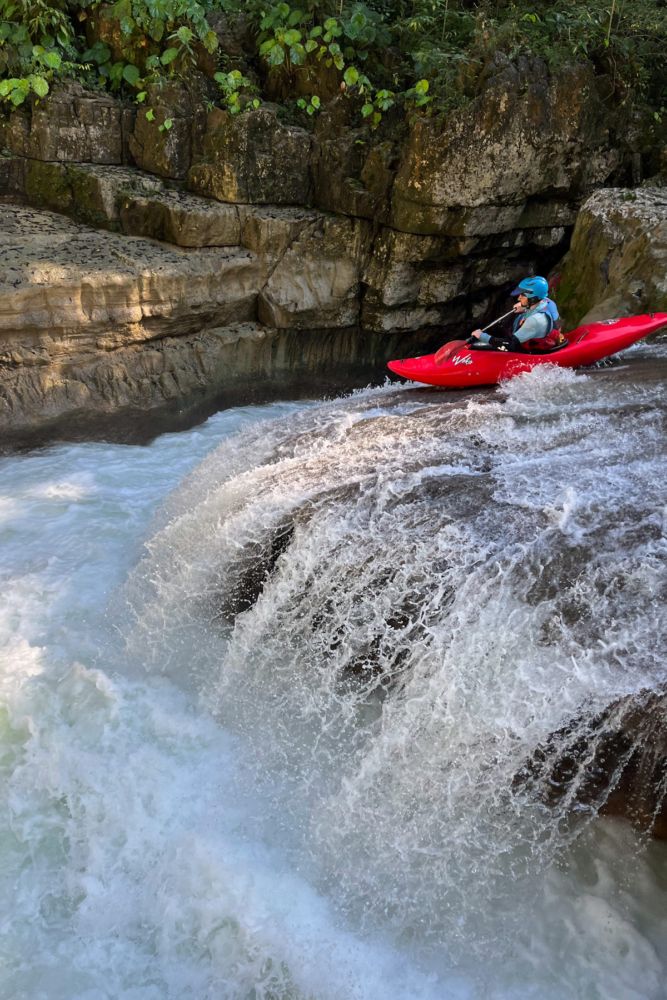
With no other option, we managed to paddle, swim, jump, climb, belay and portage through the minefield of sieves leading to the first cave. A mistake here would send a person directly to a watery grave. Just downstream of a giant boulder garden, the river precipitously dropped off.
Other than its lip, the waterfall at the cave’s entrance is completely invisible, rumored to be 200 feet tall. We planned to use a ledge on river-right to access the first cave. However, at this water level, the ledge became a vicious “eddy” feeding directly into the falls. It quickly became clear: the first cave would remain unexplored.
After dragging the kayaks up, we attempted an in-person scout for a possible re-entry via rappel after the first cave. We had just the tools, only Chris managed just one quick flight between the caves before being forced to land the drone. Defeated by the jungle blocking every view and the malfunctioning drone, we returned to camp to learn that we couldn’t view our previous drone footage.
Then it rained. Or maybe it poured. Either way, I felt like I was sitting in the shower. I watched the river level rise several inches in the time it took to filter a few liters of water. Shouting over the roar of the cave and rain, we decided the risk of a flash flood was too high. We stashed gear, broke down tents and retreated to safer terrain.
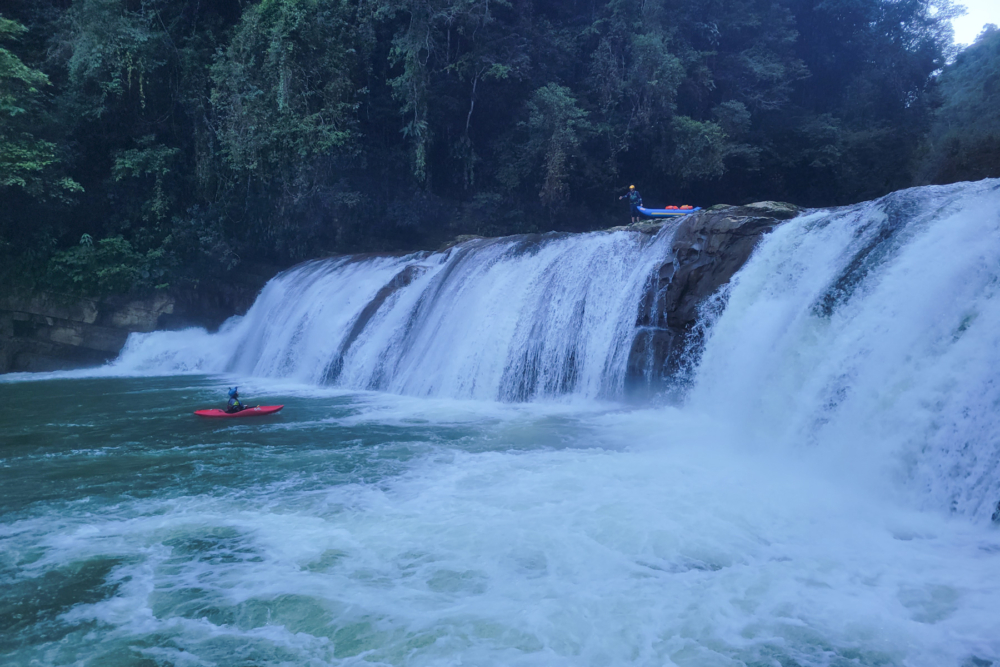
As Chris chopped down palm leaves to use as makeshift tent platforms, and with Sam struggling to light the soggy stove for dinner, I felt scared. We felt beaten down, stuck in the jungle with too much gear. My broken ribs hampered my ability to be a fully contributing team member. It seemed our adventure had suddenly fallen way over that fine line.
Over dinner, we discussed our options. Option A was to rappel back to river level after the first cave, run a half mile of an unknown, flooded gorge to the entrance of the second cave, traverse the second cave, then paddle out. Option B was a heinous portage through the jungle from the first cave to the end of the second cave, then back to the river.
With the drone (and footage) out of commission, plus the higher water levels, we were simply unwilling to commit to the river—especially because Chris thought he had seen a waterfall/sieve feature in the slot between the two caves. Option B was the only reasonable choice, but with one modification: we decided the likelihood of getting the inflated ducky several miles through the jungle was close to zero (recall the pump was lost upstream). Chris would have to swim the flat sections and walk the rapids after the caves.
The next morning was wet and muddy, but at least the rain had stopped. Eagerly committing to Option B, Sam and Chris became machete experts as we traversed river-left, staying high. Swinging the machete aggravated my ribs, so I stayed behind and hauled the loaded kayaks.
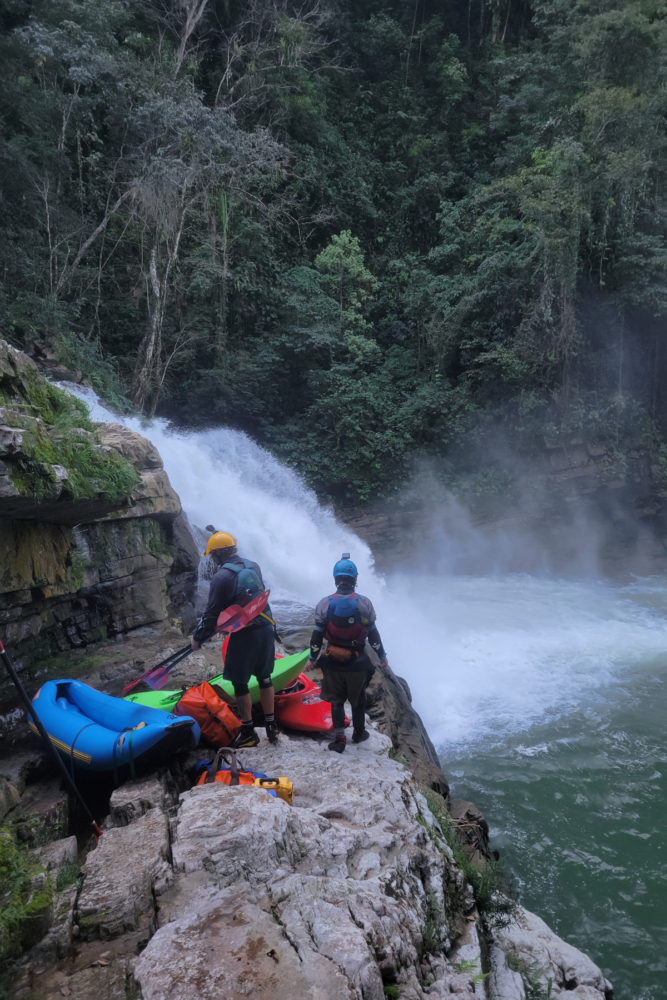
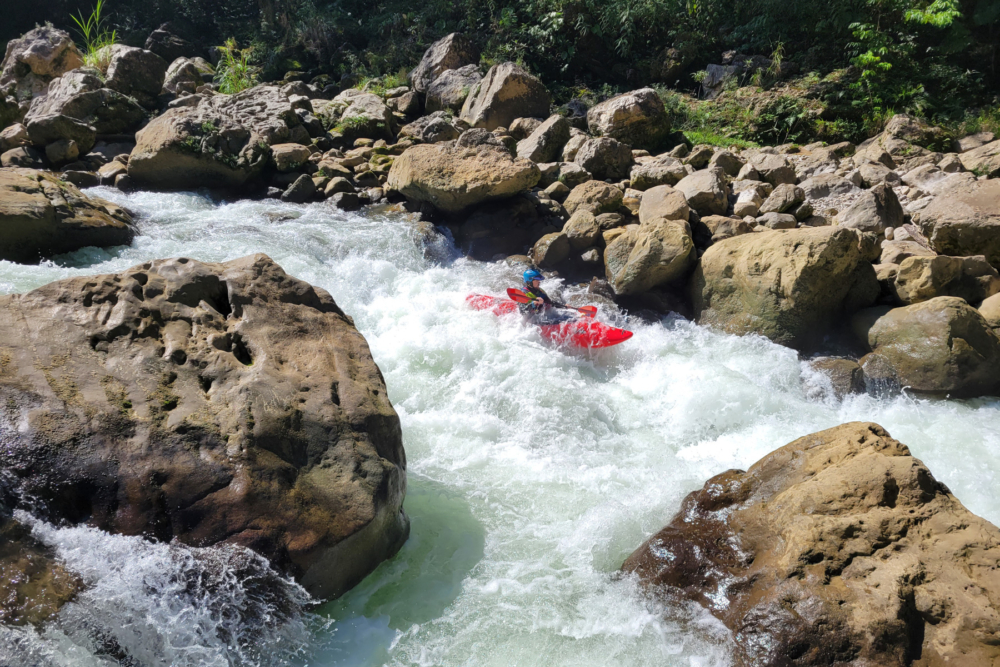
My most notable contribution was dropping a fully loaded Dagger Phantom down a steep slope. We all watched in horror as our shelter, food, InReach, and stove (not to mention passports and cash) careened downhill, snapping branches, bouncing off stumps and cartwheeling over boulders before skidding to a stop precariously close to the cliff’s edge… right after I told Sam not to drop his kayak (it’s a good thing he’s my younger brother).
We split into two teams: Sam would chop his way ahead and find the route while Chris and I would drag the boats. Within the claustrophobic jungle canopy, visibility was limited. Sam’s whistle blast pierced the air—a signal to turn on the radio. He confirmed our biggest fear had materialized: a seemingly impassible cliff blocked further progress.
Chris and I left the boats to meet Sam near the entrance of the second cave. After filtering more water (the jungle is a hot and sweaty place) and a nutritious peanut butter tortilla wrap (we were now on half rations), Chris attempted to climb the cliff. Sam secured the kayaks and other gear as it was obvious they would not be joining us any longer, regardless of which way we went. Our hope was that Chris could somehow claw his way up the cliff and haul us up. Then we’d bushwhack over the top of the second cave, rappel back to river level, swim the flatwater and walk the rapids to the take-out.
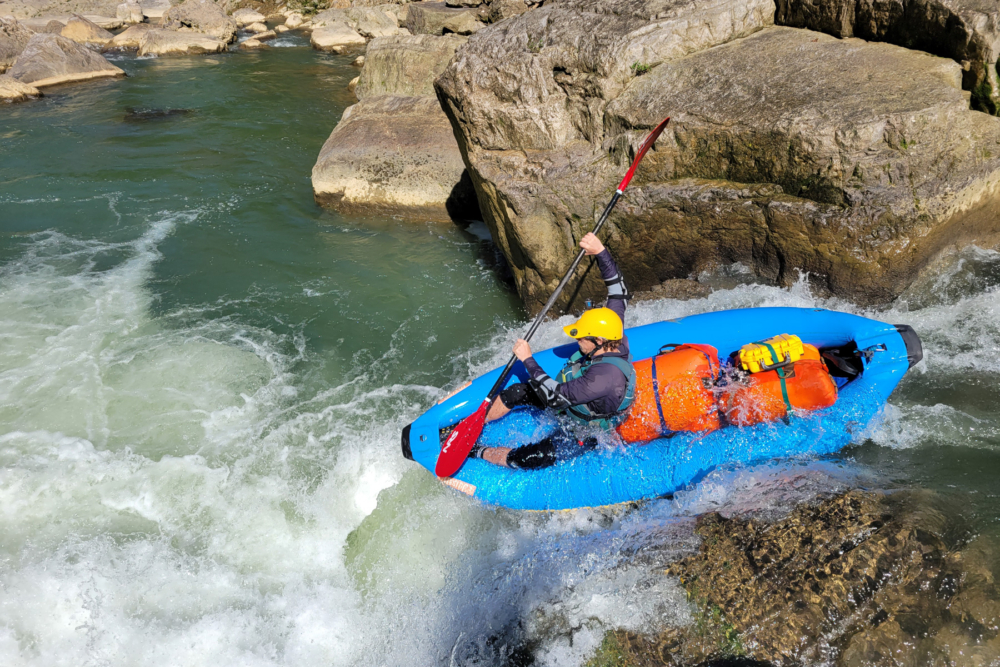
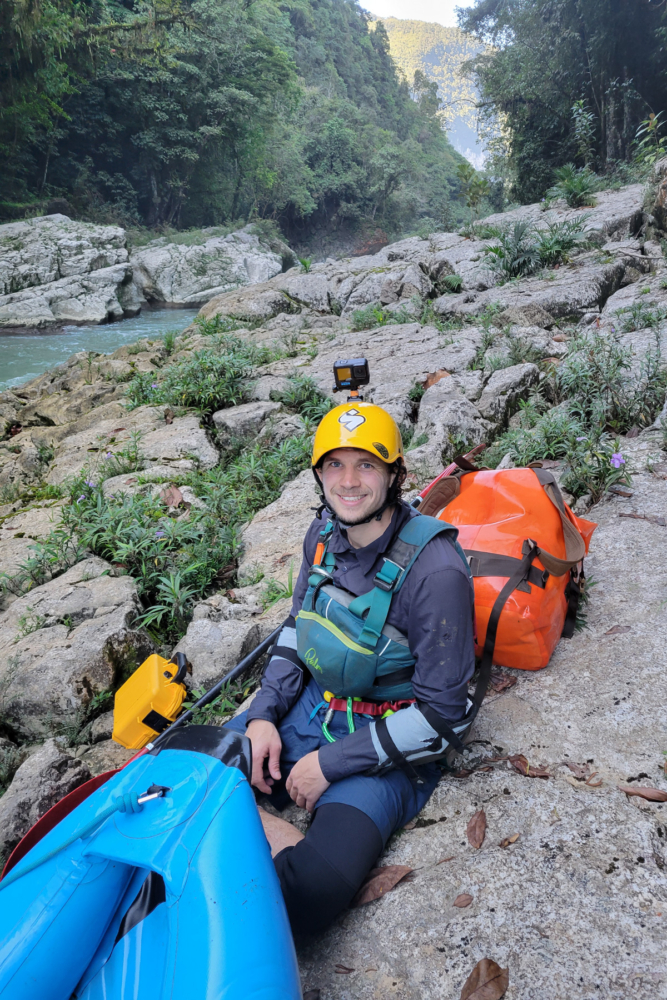
As Sam returned, Chris rappelled back down. He had run out all 350 feet of rope and made the top! We sorted through our gear again, abandoning anything unnecessary: extra clothes, kayak skirts, elbow pads, camera lenses, the final 200 feet of rope, bolts and drill, and all our cash (another one of my notable contributions).
After filling our bottles and our only 10-liter bladder to the brim, we climbed. We clawed our way up Chris’s jungle wall in whatever manner we could. It wasn’t pretty, but we made it—after jettisoning even more gear mid-wall. We collapsed at the top in a pile of mud, sweat, and blood. As daylight faded, we pitched our tent at the base of a huge tree to keep us from sliding down the slope and pretended to sleep.
Dawn came slowly in the jungle. Worries grew as we had been out of contact for more than 72 hours, a somewhat informal, unspoken rule used before our support team calls in a rescue. With the dense jungle canopy, our Garmin InReaches were unable to send or receive messages or even get a signal. Even if we called for a rescue, there was no way they’d find us.
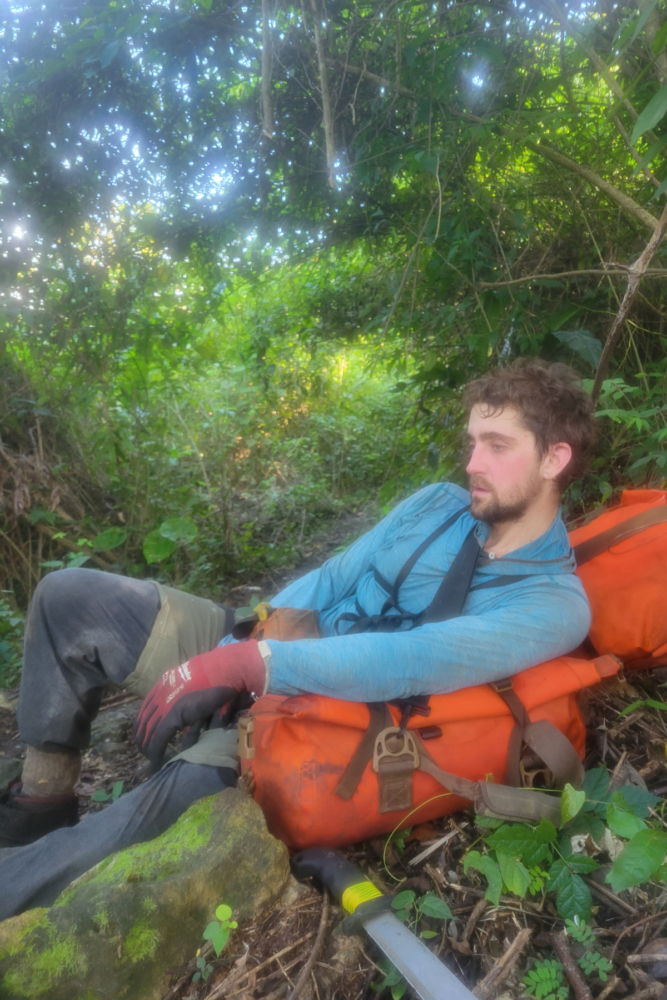
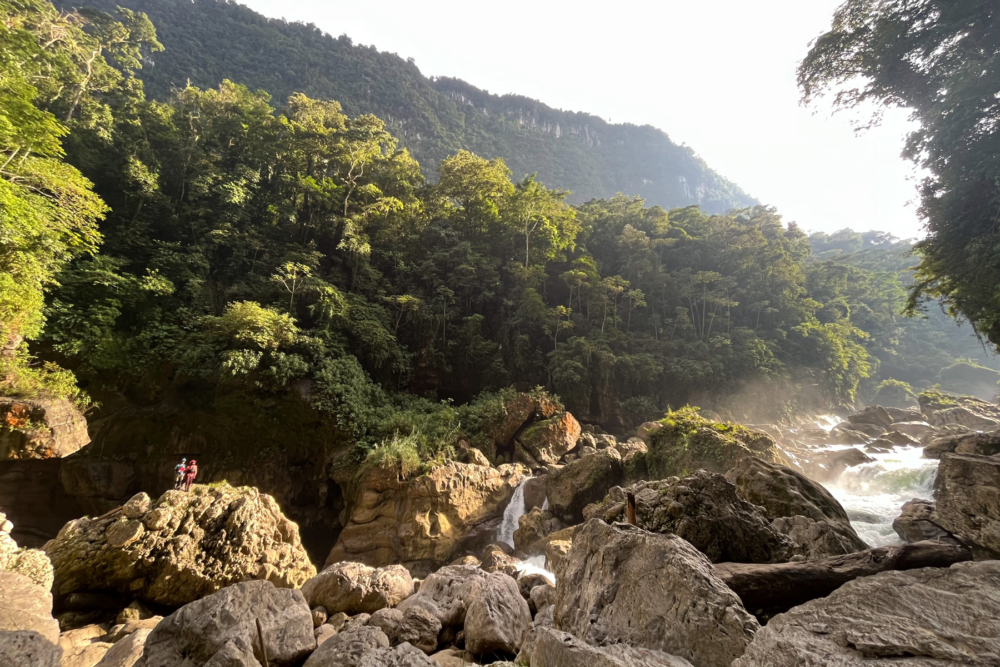
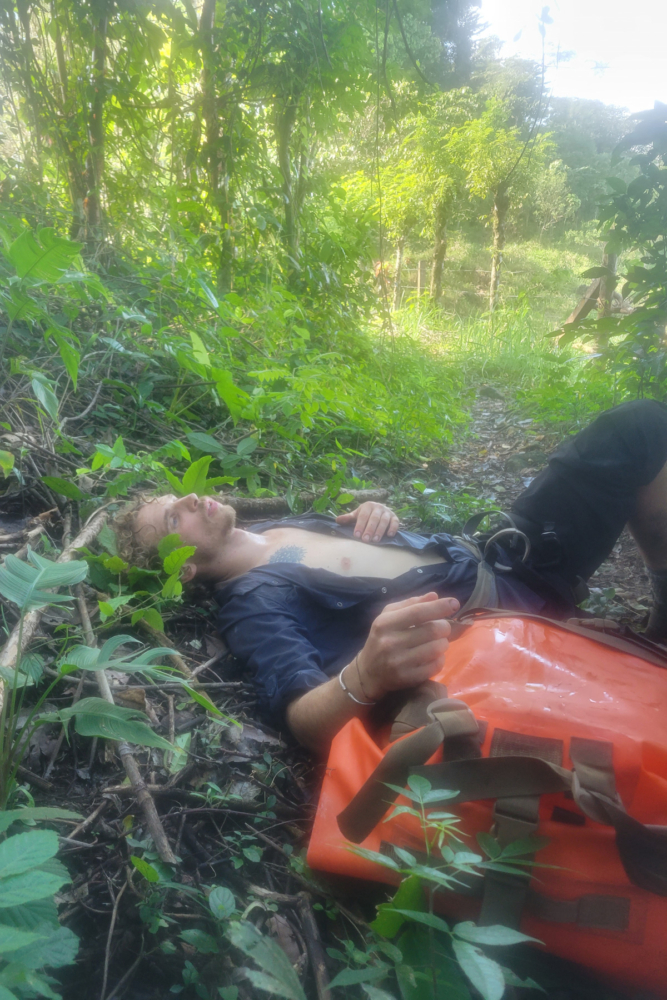
Sam and Chris spent the morning hacking jungle while I struggled behind them. Conversation was a simple series of navigational questions: Left or right? Up or down? Suddenly there was nothing left to chop. We’d found a trail. The series of “up, right, down, right, up, up, up, left” had somehow been perfect. Bewildered, we headed east towards the nearest village, a few thousand vertical feet above. Then we lost the trail. After a few frustrating figure eights, we decided that, based on the sound of the river, we had crossed from river-left to river-right on top of the second cave.
The going was slow and hot. We ditched more gear and the last of our ropes. Swarms of mosquitos and biting ants discouraged any rest stops. Almost out of water, we found the trail again. It was make-or-break to the village above. Every rest was another excuse to ditch more gear until we all collapsed in the shade, exhausted and dehydrated.
Forcing each other to get up and walk, the trail grew muddy as we encountered cows. And then, after one last steep hill, we stumbled onto a dirt road. Before we could collapse in the waiting shade, a car came around the corner. We darted into the middle of the road, waving our hands to get them to stop. After convincing four incredulous locals of our journey, we were handed a single orange out the window and a promise that the driver would be back to pick us up.
Half an hour later, the car returned. Chips and cold Fresca never tasted so good.
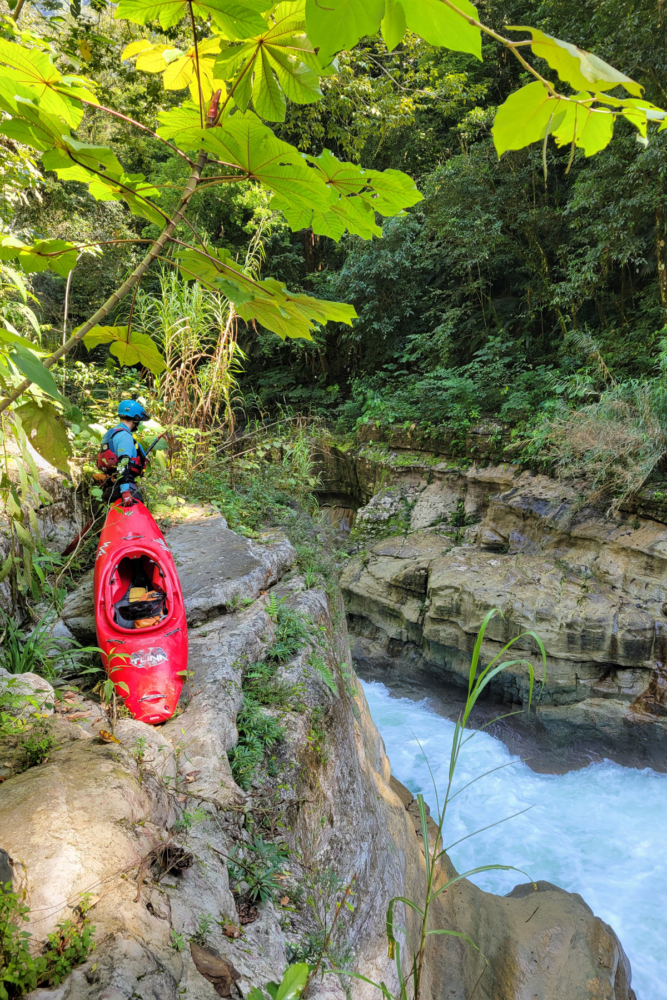
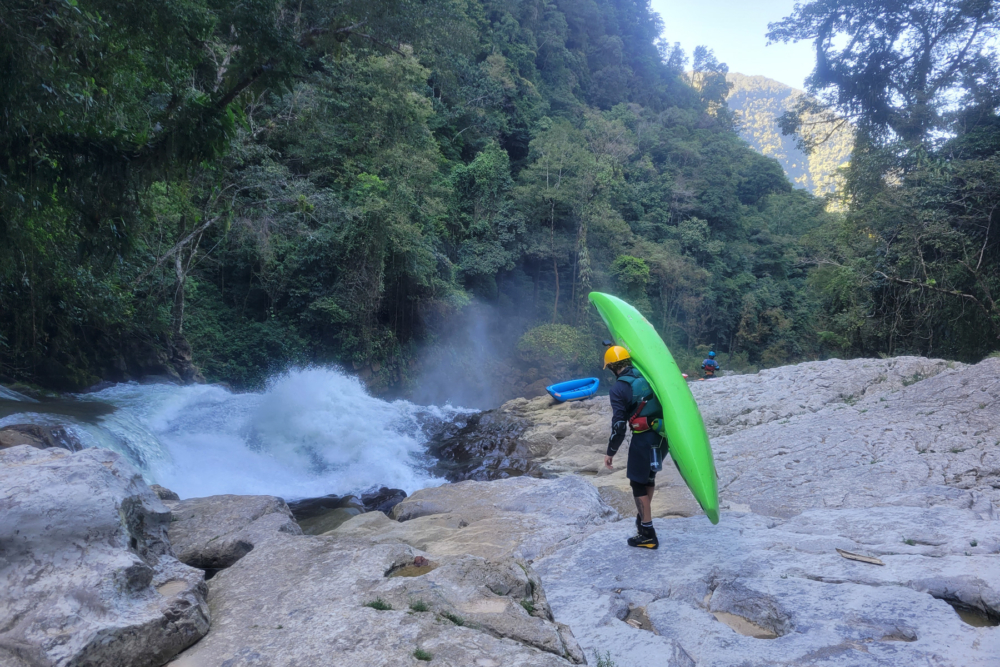
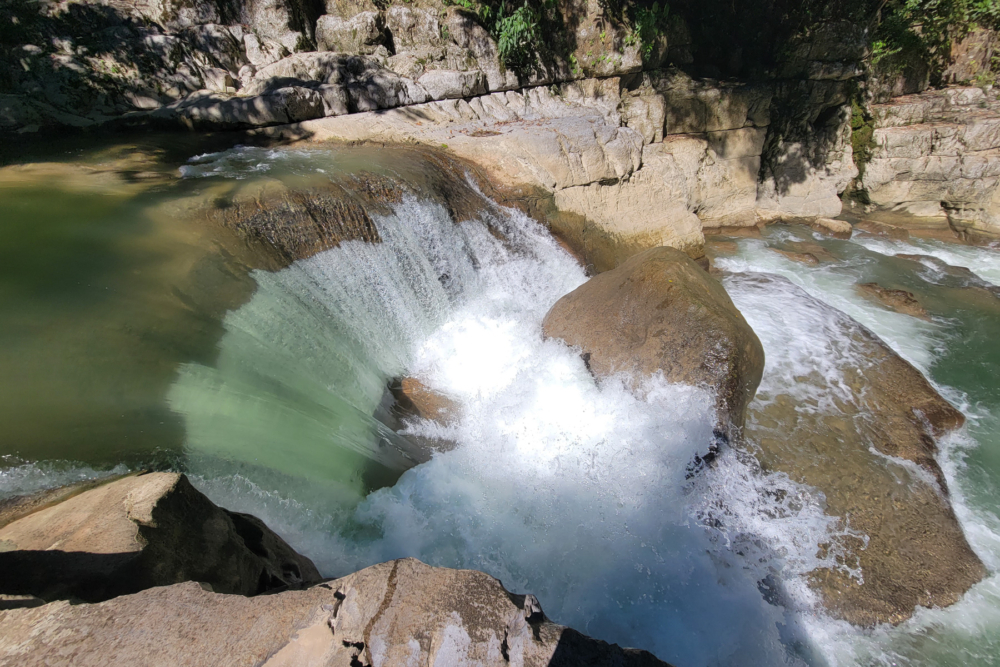
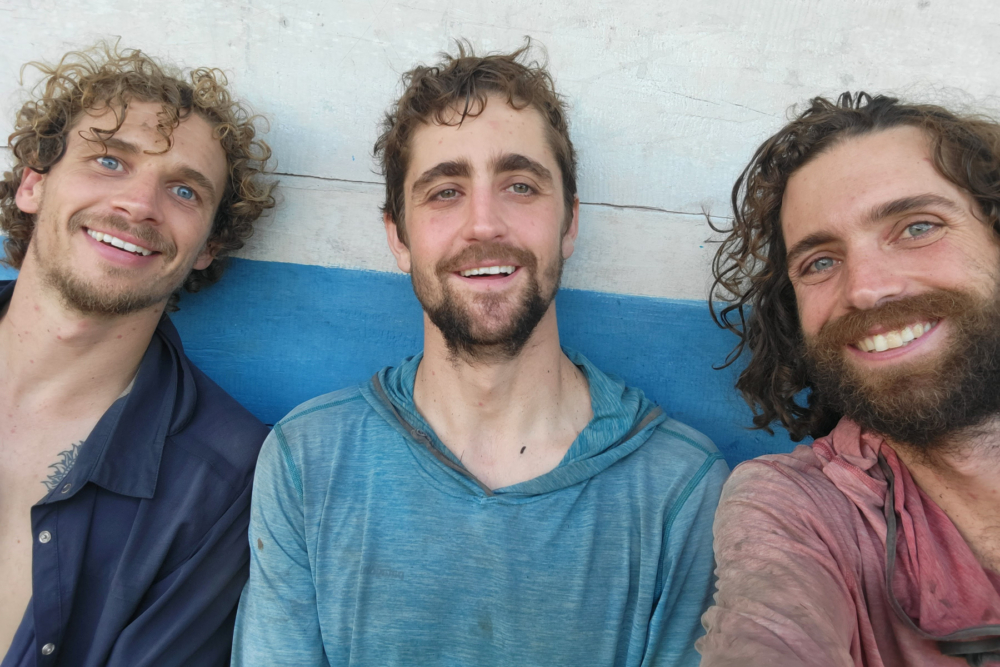
After two days of recovery, we all fell violently ill. Sam and I flew back home where I would end up in the emergency room with an exotic blend of Mexico’s finest parasites.
After a real beach vacation, Chris launched two separate missions into the jungle to recover our abandoned gear with the help of a team of locals. Our ducky is still somewhere in Mexico City, and unfortunately, the ducky pump remains lost. The recovered drone footage confirmed the stretch of river between the caves was fatal and that our jungle adventure, supported by mom’s machete sharpening skills, was the right choice.
***
When not busy as a CPA preparing taxes, Guest Contributor Ben Orkin spends his time searching for off-the-beaten-track adventures and exploring remote rivers with family and friends. He’s led whitewater expeditions across the globe and his bucket list continuously grows longer. For more Orkin Family adventures, follow them on Instagram, @orkinexploring.